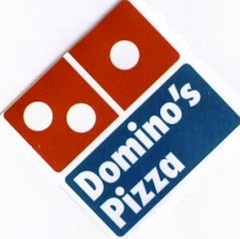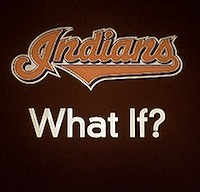 Two years ago, Dominos Pizza rolled out a risky, highly unorthodox new advertising campaign based around the old Bugs Bunny tactic of reverse psychology. Staring bashfully into the camera, Dominos President Patrick Doyle basically said, “Every customer we talked to seems to think our pizza sucks. And you know what, they’re right!” From there, he went on to cheerily extol the virtues of the “NEW” Dominos, with its higher cheese density and reduced cardboard aftertaste. At first, critics bashed the ads as misguided and borderline insulting, but when Dominos’ profits spiked by 15% the next quarter, a new marketing blueprint was born. And it’s one the Cleveland Indians might do well to follow.
Two years ago, Dominos Pizza rolled out a risky, highly unorthodox new advertising campaign based around the old Bugs Bunny tactic of reverse psychology. Staring bashfully into the camera, Dominos President Patrick Doyle basically said, “Every customer we talked to seems to think our pizza sucks. And you know what, they’re right!” From there, he went on to cheerily extol the virtues of the “NEW” Dominos, with its higher cheese density and reduced cardboard aftertaste. At first, critics bashed the ads as misguided and borderline insulting, but when Dominos’ profits spiked by 15% the next quarter, a new marketing blueprint was born. And it’s one the Cleveland Indians might do well to follow.
Since the dismantling of the “Era of Champions” team back in 2002, the Indians organization has been facing a bit of an uphill battle on the public relations front. We’ll call this the “Dolan is Cheap” Phenomenon—a sort of poisonous, thematic vine weaving its way through almost every Tribe storyline of the past decade, including the "great attendance crisis" of 2012. From a pure marketing standpoint, it's not unlike what BP was looking at after the Gulf oil spill, or Toyota after its massive recalls. Once you’ve lost the public’s trust, running your traditional, run-of-the-mill ad campaign might not prove quite so effective anymore.
So, what do companies generally do when they’re in this sort of pickle? Well, for simplicity’s sake, we’ll say there are two approaches that are most popular.
1. The Hope Approach
With this strategy, a company with a suffering reputation makes a big point of offering a “renewed commitment” to things, with a big emphasis on its boundless confidence and optimism for the future. The mistakes of the past are implied but never directly addressed. This gives your potential customer the idea that “all is well” and that all that bad stuff has totally blown over. The Hope Approach is the gold standard in politics, too, of course, and existed ages before 2008.
2. The Nostalgia Approach
An alternative method for winning back the public’s favor is to remind them of a time when they didn’t hate your shitty company. Maybe it was a year ago, or ten years ago, or back in dinosaur times. Either way, the important part is to cash out your customers’ memory banks and exploit their silly romanticizations of the past. In some respects, this is the polar opposite of the forward-thinking Hope Approach, but there’s at least one thing they have in common: there will be no acknowledgments of recent failures. O.J. Simpson is a Hall of Fame running back and M. Night Shyamalan is the brilliant director of The Sixth Sense.
 Now in recent years, the Indians have basically been attempting a hybrid of the Hope Approach and Nostalgia Approach. The “What If” campaign that debuted last season effectively tapped into Cleveland fans’ ever-increasing longing for the glories of the 1990s—back when the economy was robust and the Indians were collecting pennants all over the place. But it also spun that nostalgia around to suggest that, “hey, this current team could possibly-maybe-someday be like those teams!” For a club that wasn’t expected to compete heading into last season, the campaign made some sense. But when the Indians brought back the “What If” commercials for a second go-round this year, it basically sapped the life out of the sentiment completely. If the 2012 Indians are now pennant contenders-- as the Dolans, Mark Shapiro, Manny Acta, and Chris Perez would have us believe—then we ought to be getting to know them better in these ads; not essentially wishing they were the ’95 team. The goal is to get people to the ballpark, after all, not to have them digging through their closets for that old “Wahoo: What a Finish!” VHS tape.
Now in recent years, the Indians have basically been attempting a hybrid of the Hope Approach and Nostalgia Approach. The “What If” campaign that debuted last season effectively tapped into Cleveland fans’ ever-increasing longing for the glories of the 1990s—back when the economy was robust and the Indians were collecting pennants all over the place. But it also spun that nostalgia around to suggest that, “hey, this current team could possibly-maybe-someday be like those teams!” For a club that wasn’t expected to compete heading into last season, the campaign made some sense. But when the Indians brought back the “What If” commercials for a second go-round this year, it basically sapped the life out of the sentiment completely. If the 2012 Indians are now pennant contenders-- as the Dolans, Mark Shapiro, Manny Acta, and Chris Perez would have us believe—then we ought to be getting to know them better in these ads; not essentially wishing they were the ’95 team. The goal is to get people to the ballpark, after all, not to have them digging through their closets for that old “Wahoo: What a Finish!” VHS tape.
Nostalgia is a mindset every bit as cynical as it is romantic, because it suggests that things will never be as good as they once were.
So, how can the Tribe marketing team really get an apathetic general public excited about the CURRENT Cleveland Indians product again? Well, aside from a trip to the World Series, the franchise must finally address the albatross hanging around its neck most of this century… the aforementioned “Dolan Is Cheap” Phenomenon. They have tried to brush it aside with both cuddly nostalgia and vague optimism, but with attendance numbers still dead last in baseball and message boards still overrun with the same old clichés, misconceptions, and disillusionment, it is time for a new approach. It is time… for the Dominos Effect.
3. The Dominos Effect
Daring and clever as it may be when compared to your typical pizza commercial, the Dominos “We Suck” blitz (which was developed by their ad agency Crispin Porter & Bogusky) really just utilized a sneaky tactic straight out of high school debate club. Basically, you begin by making a substantial concession to your opponent, stealing their rebuttal before they can fling it at you. “By the way, I know you’re about to say that we suck. And yes, you’ve got a point.” Then, you deftly turn that concession into the pivot point for a big haymaker of your own. “We were SO bad, in fact, that we have gone and improved EVERYTHING to give you a better product. We’re listening!” Somehow, despite confessing that you were delivering a shit product for decades, you have just made your clientele feel special and appreciated. THEY made you change!

So what would the Cleveland Indians’ Dominos-style commercial look like? Well, you could send Chris Antonetti or Mark Shapiro out there, I suppose—admitting that they wish the Lee and Sabathia trades had netted a little more boom for the buck. Or that we probably should have added a piece or two before the 2008 season. But that alone probably won’t make enough waves. Nope. This groundbreaking baseball ad will need Larry Dolan himself-- in true “aww shucks” Patrick Doyle fashion-- taking full responsibility for his missteps as the owner of the Cleveland Indians. It doesn’t matter if Dolan actually believes he’s done anything wrong, nor does it matter if that vocal contingent of angry Tribe fans has been fair in their endless criticisms of the man. Fairness and reason don’t enter into it. This is advertising!
Dolan, whom many Indians fans have never even heard speak during a 12-year reign, will suddenly be front and center on your TV screen, addressing you—the lovely populous of his native Cleveland—about the state of your local Major League Baseball franchise. “The buck stops here,” he’ll say, before admitting that, “yeah, I’ve seen the comment boards. I’ve listened to sports talk radio. I know how you all feel.” Then, looking as sweet and vulnerable as an 81 year-old man easily should, Dolan will say, “You were right. We played it safe for too long. We missed some moments to reach the mountain top.” Then the camera pans in. “But that is all changing.” Old Larry will then reveal the Indians’ version of Dominos’ zestier sauce and thicker crust—the ballsy Ubaldo Jimenez trade, the arrival of Jason Kipnis, the fiery intensity of Chris Perez. He will talk about locking up Asdrubal Cabrera and Carlos Santana to contract extensions. He’ll talk about giving Antonetti free reign to rope in new talent. He'll discuss those new discounts on parking and booze, as requested by the fans. Most importantly, he’ll talk about playing to win NOW. And though many fans may initially throw their remotes at the television, the impact will ripple outward. Suddenly, a broken record of complaints on a 10 year-loop will come to a scratching halt, returned with a bold slap back from a defiant little old man.
“If you still don’t like what you see from the Indians this year, just let me know,” Dolan will conclude, smiling. “But first things first… come see the Indians.”